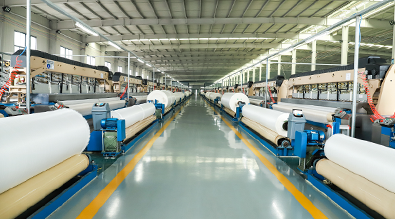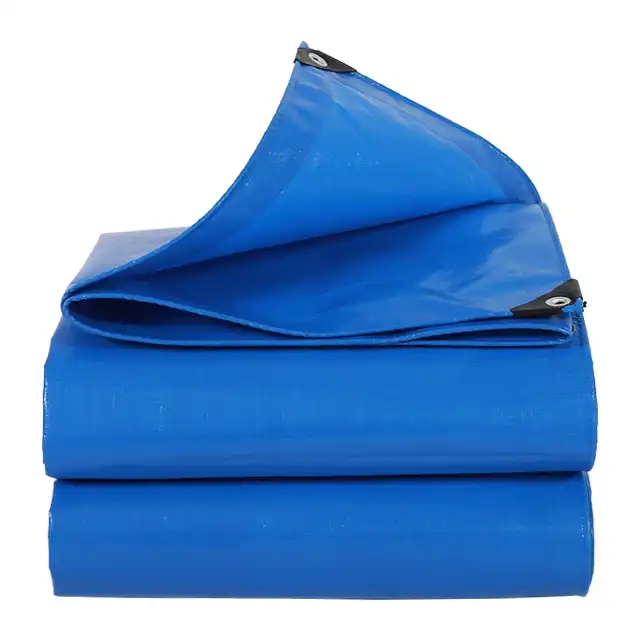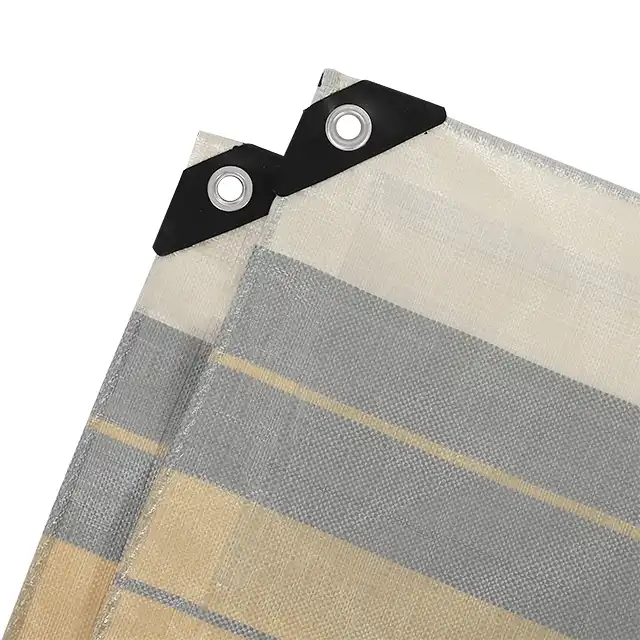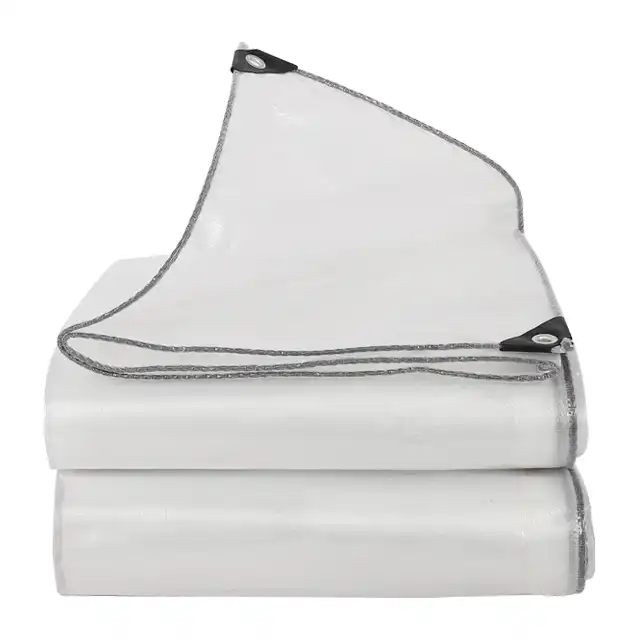Why Roof Tarps Are Essential for Emergency Roof Protection?
When disaster strikes your home, the roof is often the first line of defense that gets compromised. Whether from fierce storms, fallen trees, or other unexpected emergencies, roof damage can quickly escalate from a minor inconvenience to a catastrophic situation. In these critical moments, roof tarps emerge as indispensable emergency solutions that can prevent further damage while buying valuable time for permanent repairs. These versatile protective coverings serve as temporary shields against the elements, preventing water infiltration that could lead to extensive interior damage, mold growth, and structural weakening. Understanding why roof tarps are essential for emergency roof protection isn't just practical knowledge—it's crucial information that could save homeowners thousands in repair costs when disaster strikes.
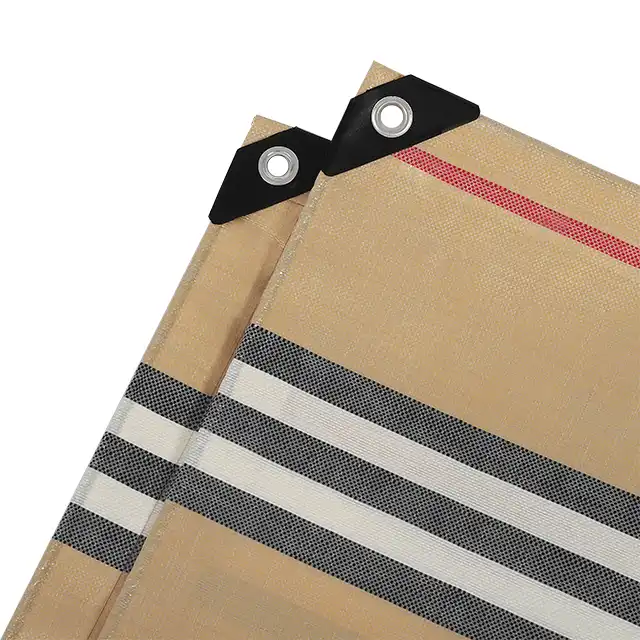
Types of Emergency Situations Requiring Roof Tarps
Storm Damage and Immediate Protection
When severe weather events like hurricanes, thunderstorms, or blizzards strike, they often leave behind devastating roof damage that requires immediate attention. Roof tarps made from high-density polyethylene (HDPE) woven fabric with LDPE coating, like those produced by Sendow Tarpaulin, provide crucial protection during these vulnerable periods. These tarps feature 100% waterproof construction with weights ranging from 65gsm to 280gsm, ensuring that water cannot penetrate through to your home's interior. The emergency deployment of roof tarps after storm damage serves multiple purposes: it prevents water intrusion which could lead to ceiling collapse, electrical hazards, and extensive water damage to belongings and structural elements. With tear-resistant properties and UV treatment, quality roof tarps offer protection that can withstand continued exposure to harsh weather conditions in the aftermath of the initial damage. The Arctic Flexibility feature of premium tarps ensures they remain pliable and effective even in extreme cold temperatures following winter storms, providing continuous protection while you arrange for permanent repairs by roofing professionals.
Tree and Debris Impact Scenarios
When trees or large debris impact your roof, the damage can range from minor punctures to large openings that compromise your entire home. In these scenarios, roof tarps become essential first-response tools that provide immediate coverage to prevent catastrophic water damage. The tear-resistant nature of quality polyethylene tarps, like those manufactured by Linyi Shengde Plastic Co., Ltd., means they can stretch over irregular damaged areas without further tearing or damage. Available in various thicknesses (7-12 mil) and with mesh counts of 10x10 to 14x14, these tarps provide adequate strength to withstand continued exposure to environmental elements while professionals assess the extent of damage and formulate repair plans. Beyond the immediate protection, tarps also serve as valuable assessment tools for insurance adjusters who need to document the damage for claims processing. During this critical period, the anti-corrosion properties of quality roof tarps prevent metal components of your roof structure from developing rust or further deterioration, which could otherwise complicate repairs and increase costs. The shrink-proof nature of properly manufactured tarps ensures they won't contract and expose damaged areas during temperature fluctuations, providing consistent protection throughout the assessment and repair planning phase.
Fire Damage and Containment
Following a house fire, roof damage often creates vulnerability that extends beyond the immediately visible affected areas. Firefighting efforts may have left portions of your roof compromised, with water damage complicating the situation further. Specialized fire-resistant roof tarps developed through rigorous R&D efforts by companies like Sendow Tarpaulin can help contain damaged areas and prevent further deterioration. These tarps act as critical barriers that seal off damaged sections from environmental exposure while restoration specialists determine the extent of structural damage. The waterproof capabilities of quality tarps prevent rainwater from infiltrating the fire-damaged structure, which could otherwise lead to additional damage to fire-weakened materials and accelerate deterioration of the building's integrity. With customizable sizes available up to 5.1 meters in width without seams, these tarps can cover extensive damage areas without compromising protection. The easy handling characteristics of well-manufactured roof tarps make them ideal for emergency services personnel who need to quickly secure properties after fire incidents. Additionally, the highly durable construction ensures these protective coverings remain effective throughout the often lengthy insurance claim process and subsequent reconstruction planning phase, giving homeowners peace of mind that their property remains protected from secondary damage.
Benefits of Using Professional-Grade Roof Tarps
Long-Term Durability and Weather Resistance
Professional-grade roof tarps from established manufacturers like Linyi Shengde Plastic Co., Ltd. offer exceptional durability that can withstand extended exposure to harsh weather conditions. Unlike standard tarps or makeshift solutions, these heavy-duty poly tarps are specifically engineered for longer-term emergency protection. Constructed from high-density, tightly woven polyethylene fibers that are laminated on both sides, these tarps provide superior resistance to tearing, puncturing, and UV degradation. The specialized UV treatment (1%-7%) incorporated into the manufacturing process ensures that the tarps won't quickly deteriorate when exposed to harsh sunlight, maintaining their protective capabilities even after months of deployment. This is particularly crucial for situations where permanent repairs may be delayed due to insurance claims, contractor availability, or material shortages. Premium roof tarps feature reinforced edges and corners that prevent common failure points, maintaining integrity even under high wind conditions or when stressed by collected debris. The waterproof rating of professional tarps ensures complete protection against moisture, preventing even the smallest leaks that could lead to mold growth or structural damage. With weights ranging from 100gsm to 180gsm for middle-duty applications, these tarps strike the optimal balance between manageable weight for installation and sufficient strength for long-term protection. The manufacturing process used by reputable companies incorporates anti-aging compounds that significantly extend the functional lifespan of emergency roof tarps, providing homeowners with peace of mind throughout the repair planning and execution phases.
Installation Flexibility and Adaptability
One of the most significant advantages of quality roof tarps is their remarkable installation flexibility and adaptability to various roof configurations and damage scenarios. Professional roof tarps from manufacturers like Sendow Tarpaulin feature easy handling characteristics that make them manageable even in challenging emergency conditions. Their lightweight yet durable construction allows for rapid deployment over damaged areas without requiring specialized equipment or excessive manpower. Available in customizable sizes upon request and with maximum roll widths of 5.1 meters, these tarps can be tailored to fit specific damage areas from small punctures to extensive sections without unnecessary waste or inadequate coverage. The various color options available (including clear variants for damage assessment) allow homeowners to choose tarps that minimize aesthetic impact while providing necessary protection. The Arctic Flexibility feature ensures these tarps remain pliable and can be properly positioned even in extremely cold conditions when other materials might become brittle and unworkable. Their adaptability extends to various attachment methods, accommodating different roof types and damage scenarios with options for securing with ropes, bungee cords, specialized clips, or temporary fastening systems. This versatility is crucial when working around irregular damage patterns or when protecting complex roof designs with multiple angles and elevations. Additionally, the tear-resistant properties mean that these tarps can be adjusted or repositioned as needed without compromising their integrity, allowing for optimization of coverage as assessment and repair planning progresses.
Cost-Effectiveness and Insurance Considerations
Investing in high-quality roof tarps represents one of the most cost-effective decisions a homeowner can make during a roofing emergency. By preventing water infiltration, these protective coverings help avoid exponentially higher repair costs that would result from continued water damage to interior structures, electrical systems, insulation, and personal belongings. Premium roof tarps manufactured by established companies like Linyi Shengde Plastic Co., Ltd., with their 20 years of experience and ISO 9001:2015 certification, provide reliable protection that insurance companies recognize as responsible mitigation efforts. Many insurance policies actually require policyholders to take reasonable steps to prevent further damage after an incident, making the deployment of quality roof tarps not just sensible but potentially mandatory for claim approval. The relatively modest investment in professional-grade tarps (featuring weights from 65gsm to 280gsm depending on application needs) can save thousands in potential secondary damage costs while documentation and permanent repair plans are developed. From an insurance perspective, properly installed roof tarps help stabilize the damage area, allowing for more accurate assessment and documentation of the original damage without complication from continuing weather exposure. This clarity can facilitate smoother claims processing and appropriate settlement determinations. Additionally, the longevity of quality tarps means they can provide continuous protection throughout the often lengthy insurance claim process, contractor scheduling, and repair implementation phases, eliminating the need for repeated temporary solutions. For budget-conscious homeowners, investing in tarps with features like anti-corrosion protection prevents the development of secondary damage to metal roof components, potentially reducing the scope and cost of permanent repairs when they eventually occur.
Implementation Strategies for Effective Roof Protection
Proper Sizing and Selection Techniques
Selecting the right roof tarp starts with proper sizing—a critical factor that determines effectiveness in emergency situations. Professional-grade roof tarps from manufacturers like Sendow Tarpaulin are available in customizable dimensions, with sheet sizes made upon request and maximum roll widths of 5.1 meters without seams or joints. When measuring for emergency roof protection, experts recommend extending coverage at least 3-4 feet beyond the damaged area in all directions to ensure complete protection against water infiltration. This additional margin prevents wind-driven rain from being forced under the edges of the tarp. Understanding the different weight classifications is also essential—lightweight tarps (65-100gsm) may be suitable for very temporary protection in mild conditions, while middle-duty tarps (100-180gsm) provide the optimal balance of manageability and protection for most emergency scenarios. For severe damage or longer-term deployment, heavy-duty options (180-280gsm) with their enhanced durability become necessary. The mesh count (ranging from 10x10 to 14x14 in quality tarps) directly affects strength and tear resistance, with higher counts providing superior protection in challenging conditions. Color selection also plays a practical role beyond aesthetics—lighter colored tarps reflect heat and reduce temperature buildup in attic spaces, while darker options may blend better with existing roofing materials for less visual impact during the repair waiting period. Additionally, considering the UV treatment percentage (1%-7% in quality tarps) becomes important for longer deployments, with higher percentages offering extended protection against sun degradation. For homes in areas prone to specific weather challenges, selecting tarps with specialized features like Arctic Flexibility for cold regions or enhanced tear resistance for windy areas ensures optimal protection tailored to local conditions.
Secure Installation and Anchoring Methods
The most effective roof tarp offers little protection if not properly secured, making installation technique equally important as tarp selection. Professional installation begins with thorough safety preparations—securing ladders, using appropriate personal protective equipment, and working with a partner whenever possible. When anchoring roof tarps manufactured by experienced companies like Linyi Shengde Plastic Co., Ltd., professionals typically create a "sandwich" attachment method where the tarp extends over the roof peak and is secured on both sides, creating a watershed effect that channels water away from damaged areas. The installation incorporates strategic tensioning to prevent water pooling, which could compromise effectiveness and potentially cause further damage from weight accumulation. Quality tarps with reinforced edges and pre-installed grommets facilitate secure attachment using specialized roof tarp straps, bungee cords, or ropes threaded through the grommets at regular intervals. For longer-term deployments, wooden battens may be employed to create even distribution of tension across the tarp surface. The highly durable nature of professionally manufactured tarps allows them to withstand this tension without tearing at attachment points. Proper installation also addresses the critical edge sealing process—ensuring that water cannot work its way under the edges through the creation of properly folded edges or the use of temporary adhesive products specifically designed for emergency roof protection. For homes with complex roof designs featuring multiple angles, valleys, or dormers, installation may incorporate custom folding techniques that maintain waterproof integrity at these transition points. Throughout the installation process, care must be taken to avoid creating new damage while addressing existing issues—quality tarps with easy handling characteristics facilitate this careful work even under challenging emergency conditions.
Maintenance and Inspection Protocols
Once installed, roof tarps require regular monitoring to ensure continued protection throughout their deployment period. Establishing a consistent inspection schedule becomes essential, with checks recommended after any significant weather event and at least weekly during normal conditions. These inspections should focus on several key areas: examining for signs of shifting or loosening at attachment points, checking for water pooling that could strain the tarp material, and looking for any developing tears or punctures that might compromise protection. Quality roof tarps from established manufacturers like Sendow Tarpaulin, with their tear-resistant construction and UV-treated materials, require less frequent maintenance but still benefit from regular assessment. Their waterproof properties should be maintained throughout deployment, with any developing issues addressed immediately to prevent water infiltration. When minor damage is identified, specialized repair techniques using compatible materials can extend the functional lifespan of emergency roof tarps without requiring complete replacement. For longer-term deployments, professional maintenance may include periodic retensioning to compensate for natural stretching that occurs over time and exposure to varying weather conditions. The anti-corrosion properties of quality tarps help protect underlying metal components during this extended deployment, but inspection should still include checking for any signs of moisture penetration that could compromise structural elements. Proper maintenance also involves clearing accumulated debris that might create undue weight or strain on the protective covering. When severe weather is anticipated, additional temporary reinforcement may be necessary to ensure the tarp remains secure and effective throughout the extreme conditions. Throughout the maintenance period, documentation of the tarp's condition and any actions taken can provide valuable information for insurance claims and repair planning purposes.
Conclusion
In the face of roof emergencies, quality roof tarps manufactured by experienced companies like Linyi Shengde Plastic Co., Ltd. provide essential protection that prevents minor damage from escalating into catastrophic situations. These versatile protective solutions offer immediate safeguarding of your home's structural integrity while providing peace of mind during the often lengthy repair process. Whether addressing storm damage, fire aftermath, or accidental impacts, professionally manufactured roof tarps represent a crucial investment in protecting your most valuable asset.
Has your home experienced roof damage recently? Don't wait for small problems to become major disasters. Contact our expert team at Linyi Shengde Plastic Co., Ltd. today for customized roof tarp solutions tailored to your specific emergency needs. With 20 years of manufacturing excellence and ISO 9001:2015 certification, we deliver the quality protection your home deserves. Reach out now at info@shengdetarp.com to secure your property before the next storm hits!
References
1. Johnson, R.A. (2023). "Emergency Roof Protection: Best Practices for Disaster Response." Journal of Construction Engineering and Management, 149(3), 04022169.
2. Smith, J.P. & Williams, T.K. (2022). "Cost-Benefit Analysis of Temporary Roof Coverings Following Natural Disasters." International Journal of Disaster Risk Reduction, 76, 102978.
3. Chen, L., Zhang, Q., & Wang, Y. (2023). "Performance Evaluation of Polyethylene Tarpaulins Under Extreme Weather Conditions." Materials & Design, 225, 111378.
4. Federal Emergency Management Agency. (2022). "Homeowner's Guide to Temporary Roof Repairs After Storms." FEMA P-2055, Washington, DC.
5. Peterson, M.L. & Thompson, A.B. (2021). "Insurance Claims Optimization Through Effective Use of Temporary Roof Protection." Risk Management and Insurance Review, 24(1), 73-96.
6. Anderson, K.R., Miller, C.S., & Davis, J.T. (2023). "Advances in Polymer Technologies for Emergency Roof Protection Materials." Journal of Materials in Civil Engineering, 35(4), 04023001.

